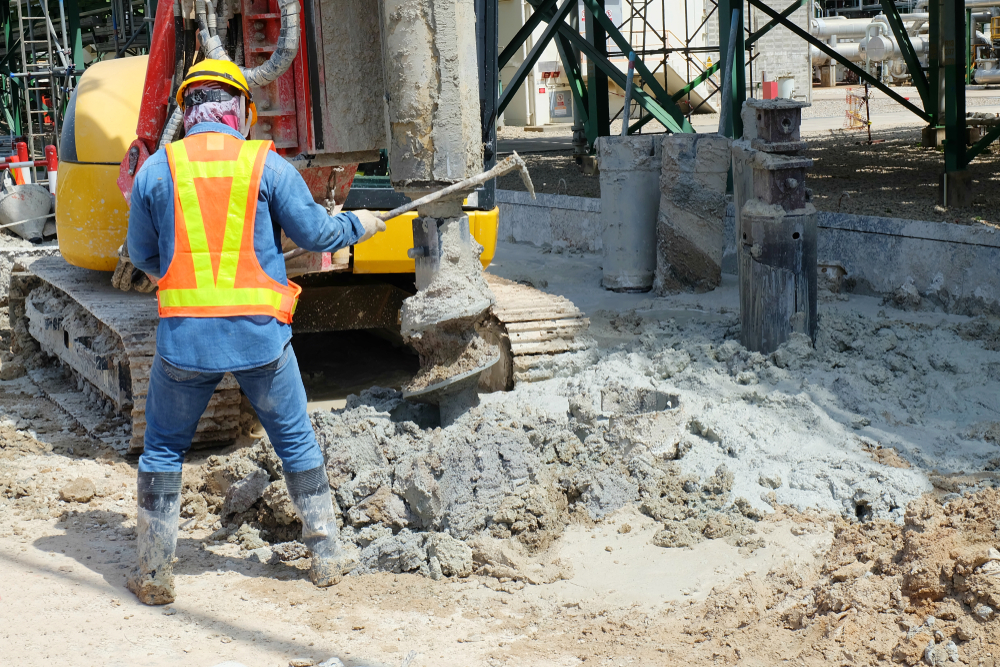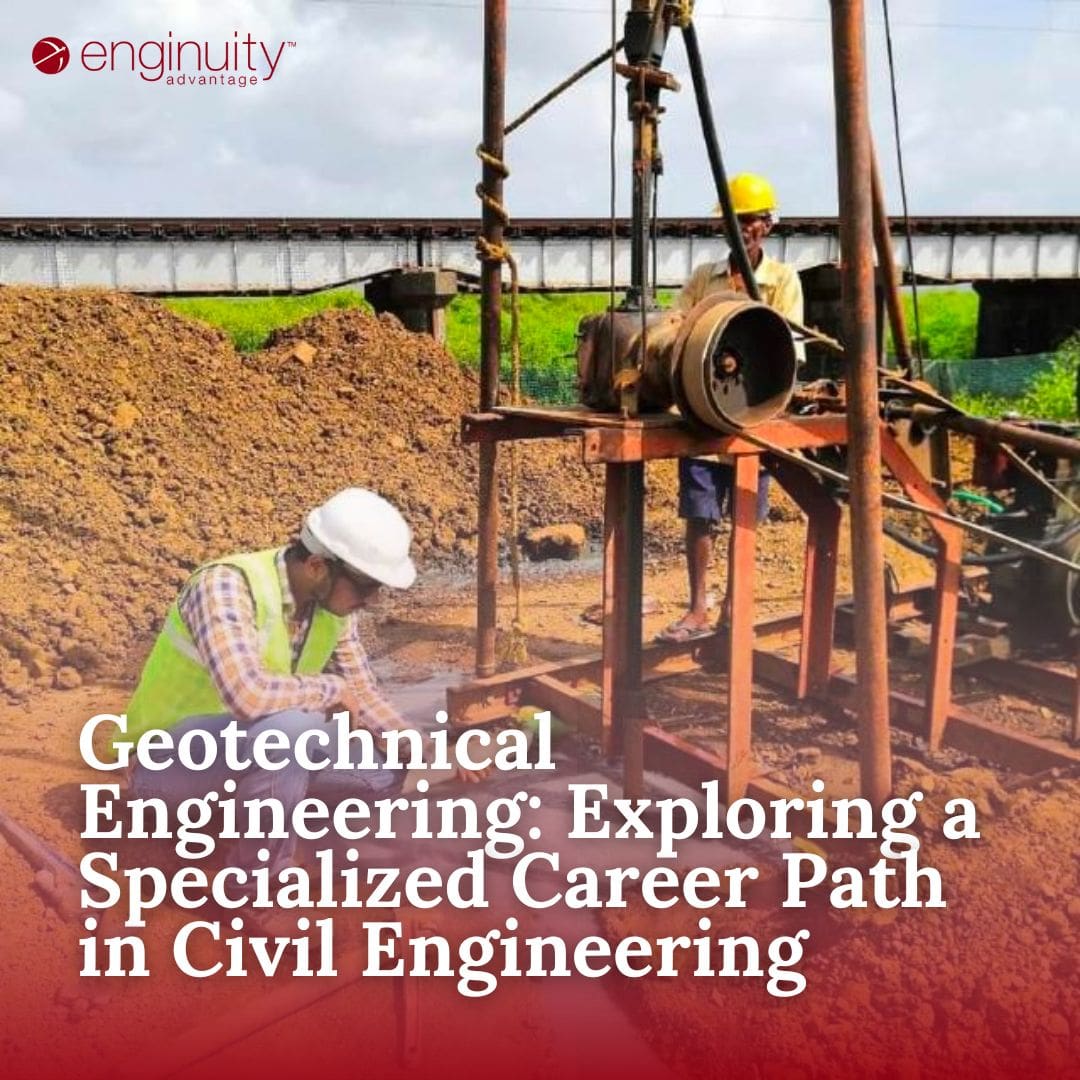A Comprehensive Guide: All About Geotechnical Engineering and Its Applications
Wiki Article
An Extensive Summary of Geotechnical Design Techniques and Their Effect On Modern Civil Engineering Projects
Geotechnical engineering offers as the backbone of modern-day civil engineering, supplying vital techniques that attend to the complexities of subsurface conditions. The interaction of soil analysis, structure design, and ingenious technologies shapes the honesty and sustainability of infrastructure jobs.Significance of Geotechnical Design
Geotechnical engineering works as a crucial foundation for civil design tasks, influencing the safety and security and stability of structures. This discipline focuses on the actions of soil and rock products, supplying essential understandings that assist the style and building and construction processes. By comprehending the communication in between the earth and engineered frameworks, geotechnical designers can analyze risks related to ground problems, such as negotiation, incline security, and liquefaction.The importance of geotechnical engineering prolongs beyond simple architectural honesty; it plays an important function in environmental defense and sustainability. Correctly executed geotechnical evaluations make sure that jobs lessen their eco-friendly impact and adhere to regulatory requirements (geotechnical engineer description). Furthermore, geotechnical engineering is important in site selection, allowing engineers to identify suitable locations for building that minimize possible threats.
On top of that, geotechnical design cultivates advancement in civil design by progressing methods for ground enhancement, foundation design, and excavation. The technique's payments are essential in resolving obstacles postured by differing soil problems, therefore helping with reliable and secure facilities development. On the whole, the significance of geotechnical engineering is paramount in guaranteeing that civil engineering jobs are not only practical however additionally durable versus man-made and all-natural misfortunes.
Key Methods in Geotechnical Engineering

One more necessary method is soil stabilization, which involves changing dirt residential properties to improve load-bearing capability or decrease settlement. Methods such as including concrete, lime, or utilizing geosynthetics are commonly used to accomplish soil improvement.
Ground improvement methods, including vibrant compaction and vibro-replacement, are also important. These methods intend to compress soft or loosened soils, enhancing their toughness and decreasing liquefaction potential in seismic areas.
Preserving frameworks, such as sheet piles and soil nailing, are employed to sustain excavations and avoid dirt motion. In addition, slope stablizing techniques, consisting of drainage systems and maintaining wall surfaces, are essential for minimizing landslide risks.

Soil Analysis and Evaluating Methods
Effective soil evaluation and screening approaches are essential for understanding the physical and chemical residential or commercial properties of soil, which straight influence engineering decisions. A detailed evaluation of soil attributes is necessary for predicting habits under various loading conditions and ecological influences.Typical soil screening methods consist of both field and research laboratory methods. Area tests, such as the Criterion Penetration Examination (SPT) and Cone Infiltration Test (CPT), supply immediate insights right into dirt density, stamina, and stratification. These tests assist designers assess website problems efficiently prior to even more considerable laboratory analyses.
Lab screening methods, such as Atterberg restrictions, grain size distribution, and compaction examinations, are crucial for figuring out dirt plasticity, moisture material, and ideal compaction degrees. Advanced techniques like triaxial tests and consolidated undrained (CU) tests provide useful information on shear toughness and reliable stress and anxiety parameters.
Chemical testing, consisting of pH, electric conductivity, and organic content evaluation, is also important for understanding possible soil contamination and its effect on building materials. Jointly, these soil analysis and screening techniques develop the foundation of notified decision-making in geotechnical design, ensuring the security and stability of modern-day civil engineering tasks.
Foundation Design Approaches
These methods can be classified into shallow and deep foundations, each fit to details dirt conditions and packing situations. Shallow foundations, such as spread grounds and floor covering structures, are usually made use of when surface soils have sufficient bearing capacity.In comparison, deep foundations, including stacks and pierced shafts, are utilized when surface area dirts are insufficient or weak for sustaining the structure. These foundations transfer tons to much deeper, more stable dirt or rock layers, making them important for skyscrapers and bridges in difficult geotechnical conditions.
Choosing the ideal foundation style involves comprehensive geotechnical examinations, including soil composition, bearing ability, and groundwater problems. Moreover, engineers must consider factors such as settlement, lateral loads, and potential seismic task to ensure the foundation's efficiency over time.
Inevitably, a well-executed structure design is a pivotal facet of civil engineering, straight affecting the safety, longevity, and performance of frameworks. all about geotechnical engineering. By aligning structure kinds with site-specific conditions, designers can successfully alleviate dangers connected with foundation failing
Developments Forming Civil Design

Sustainable materials, such as high-performance concrete and recycled accumulations, are additionally gaining traction, promoting green practices while preserving structural stability. In addition, progressed geotechnical strategies, such as ground improvement and deep mixing techniques, are boosting the security of structures in tough soil conditions.
Additionally, using drones and remote picking up modern technology is boosting site checking and checking, supplying real-time information that aids in handling building development and security. The application of ingenious building methods, such as premade and modular building and construction, even more speeds up project timelines and reduces waste. Jointly, these technologies are not just transforming civil engineering methods but also making certain that modern-day facilities satisfies the demands of an expanding worldwide population while attending to environmental concerns.
Verdict
Finally, geotechnical design techniques are integral to the success of modern-day civil engineering tasks. The application of site investigation, dirt stabilization, and ground improvement methods ensures the safety and security and stability of framework. Advancements such as Building Details Modeling (BIM) and advanced surveillance technologies better improve project effectiveness and precision. By using these strategies, engineers can alleviate risks and add to the development of resistant city environments, inevitably cultivating sustainable growth and safety and security in civil engineering methods.Geotechnical engineering offers as the foundation of modern civil design, supplying important methods that resolve the complexities of subsurface conditions.Geotechnical engineering serves as an important structure for civil design projects, influencing the security and stability of structures.In addition, geotechnical engineering fosters advancement in civil design by progressing techniques for ground enhancement, structure layout, and excavation. On the whole, the significance of all about geotechnical engineering geotechnical engineering is extremely important in ensuring that civil design jobs are not just viable yet additionally resilient versus manufactured and all-natural misfortunes.
In final thought, geotechnical design methods are important to the success of modern-day civil design jobs.
Report this wiki page